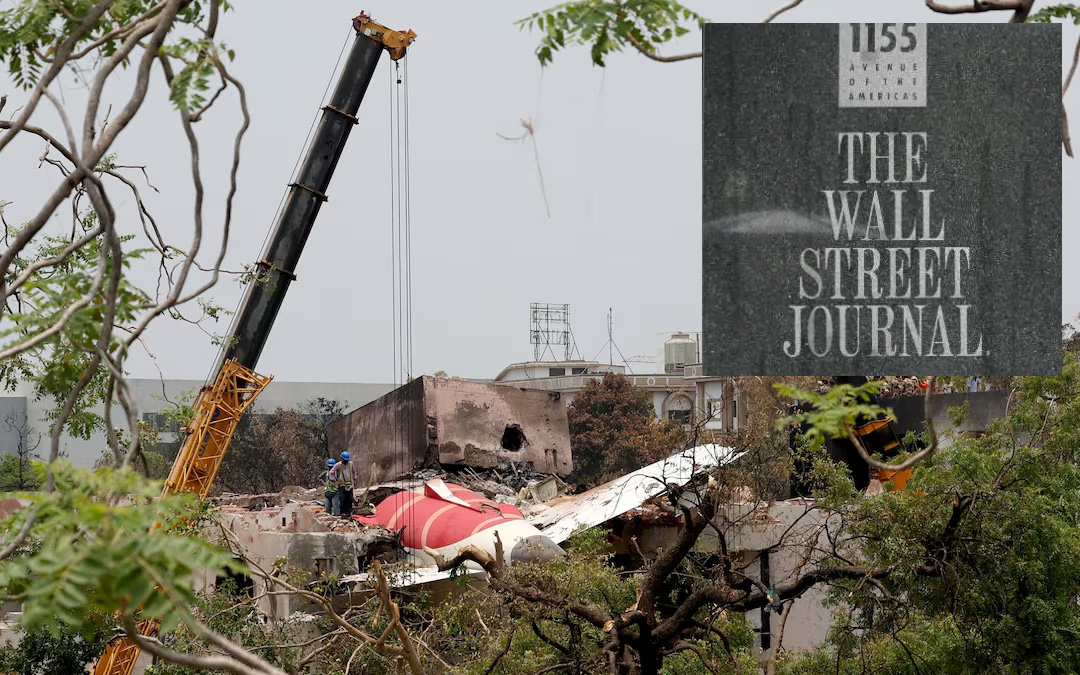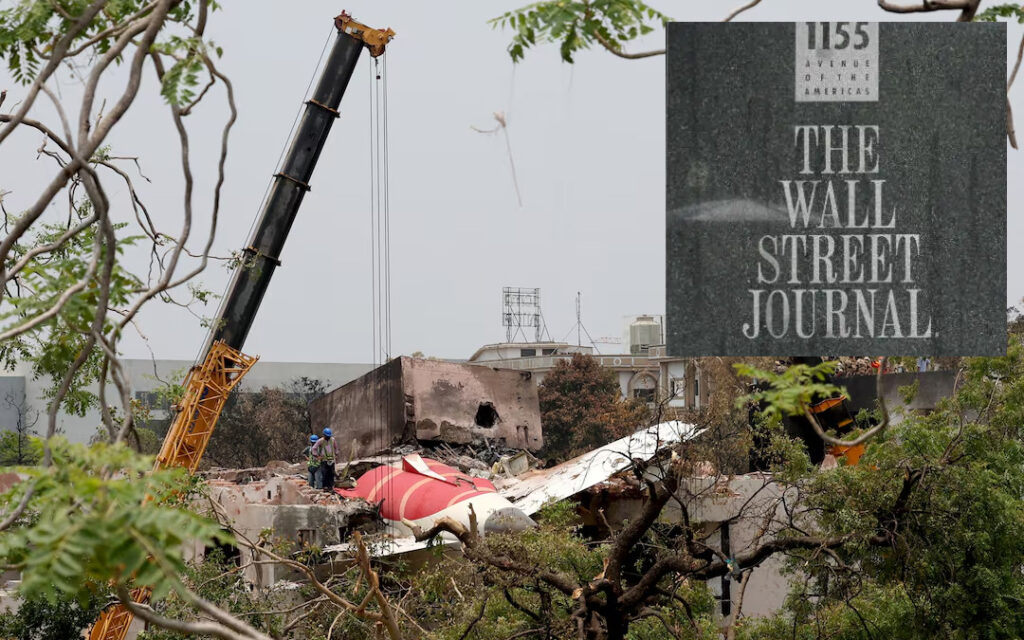


By K Raveendran
The Wall Street Journal’s report on the Ahmedabad Air India crash has triggered a storm of controversy not only for what it suggests but also for what it deliberately avoids. The claim that the crash, which took 260 lives, may have been caused by the senior pilot unintentionally or mistakenly putting the fuel control switch in the cut-off position is presented as a finding from preliminary investigations. Yet the entire report is predicated on anonymous sources, vague phrasing, and an overall speculative tone that raises more questions than it answers. In a case of such magnitude and human tragedy, a claim of this nature carries heavy implications—not least because it seems to absolve the aircraft manufacturer, Boeing, of any blame. And that is precisely where the unease lies.
At face value, the report offers no hard evidence, no black box transcript, and no direct statements from investigating authorities to support its most consequential insinuation. It is speculative by admission and selectively sourced, quoting individuals purportedly “familiar with the probe.” In the world of aviation reporting, particularly in the context of post-crash assessments, this kind of journalistic hedging can often be more strategic than informative. The timing, anonymity, and framing of the article all suggest that it may serve a public relations purpose more than it serves public interest.
The possibility that the story is a planted narrative cannot be dismissed lightly, especially given the track record of how Boeing and other aviation corporations have navigated crises in the past. Media placement is a subtle but potent weapon in the realm of crisis management, and Boeing is no stranger to this strategy. Following the two catastrophic crashes involving the 737 MAX aircraft in 2018 and 2019, the company was initially quick to point to pilot training and operational errors. Only under mounting international pressure and meticulous investigative scrutiny did Boeing concede to software flaws and systemic safety issues in the MCAS system, which were ultimately found to be central to the crashes.
Given that history, the suggestion that the Ahmedabad crash report may be part of a broader attempt to refocus blame is not a wild conspiracy theory, but a plausible continuation of an established pattern. In this case, the framing of the WSJ article effectively shifts the lens away from mechanical, software, or design faults that could potentially point back to Boeing, and instead plants the seed of human error, specifically that of the pilot. The pilot, of course, is not here to defend himself. Nor are the 259 other lives lost in the tragedy able to provide context or counterpoint.
The tactic of blaming pilot error is particularly insidious because it operates on multiple psychological levels. For one, it exploits the public’s general lack of technical understanding about aircraft systems. To the layperson, the idea that a pilot “mistakenly flipped a switch” seems like a tragic but understandable human slip. It plays into a narrative of fallibility and distraction, steering the emotional focus away from mechanical flaws, production shortcuts, or system design oversights. At the same time, it serves the institutional interest of the aircraft manufacturer, which has billions of dollars at stake in current and future contracts, not to mention shareholder confidence.
There is a grim irony in how the narrative around pilot error is often deployed. Pilots are among the most highly trained professionals in any field. Their every move is subjected to simulation, testing, review, and regulation. While human error is never out of the question, it is seldom the sole or primary cause of major aviation disasters—especially when it comes to systemic failures or design flaws that lie hidden beneath layers of operational complexity. The attempt to scapegoat a pilot in the immediate aftermath of a crash—before full data from black boxes is made public, before the investigation is complete—should always raise red flags.
Moreover, the involvement of a US media outlet, particularly one with the stature of The Wall Street Journal, adds a significant dimension of corporate intrigue. Boeing, as one of America’s flagship manufacturing giants, has deep roots not just in commerce but in politics and international diplomacy. It is a major defence contractor and a symbol of American industrial power. That reality brings with it a strong motivation—if not outright pressure—to protect the company’s reputation in global markets. Favourable media coverage, carefully curated leaks, and selectively attributed information are all part of the playbook when a company of Boeing’s stature is under scrutiny.
This is not to argue that media organizations are complicit in misinformation, but it does highlight how strategic narratives can be embedded in seemingly routine reporting. Especially in crisis situations, the distinction between a leak and a plant is often only a matter of motive and timing. For a company under the shadow of past failures, a well-placed article can serve as a preemptive shield, setting the stage for public perception before the official facts are fully established.
It is crucial that the Directorate General of Civil Aviation (DGCA) and the Aircraft Accident Investigation Bureau (AAIB) release their findings in a manner that is not only scientifically robust but also publicly transparent. Leaks through foreign media should not be allowed to shape the early narrative of a tragedy that occurred on Indian soil and involved Indian carriers and passengers. The families of the victims deserve nothing less than an unambiguous and fact-based explanation for what went wrong. (IPA Service)
